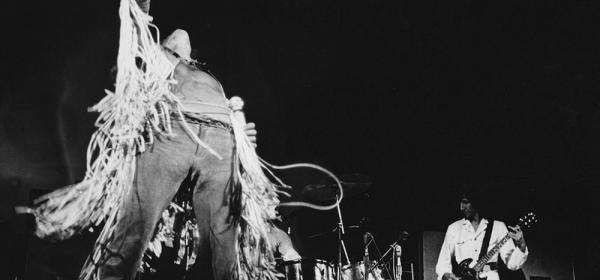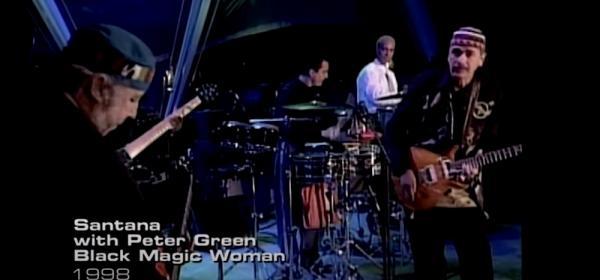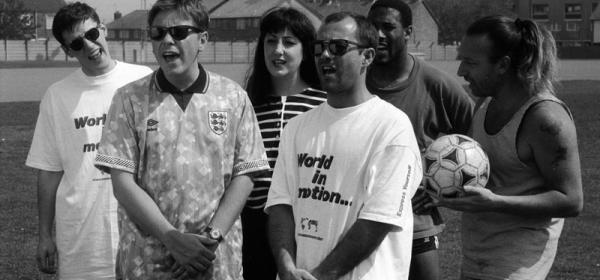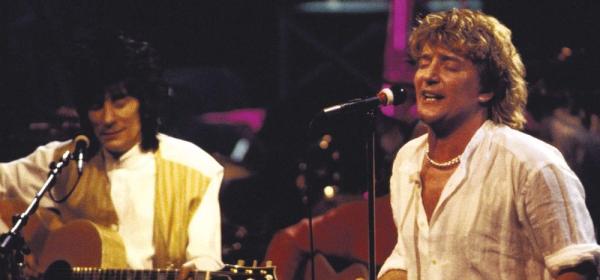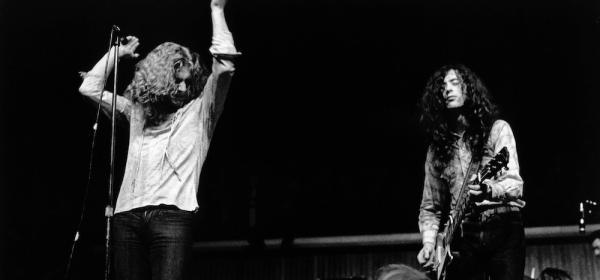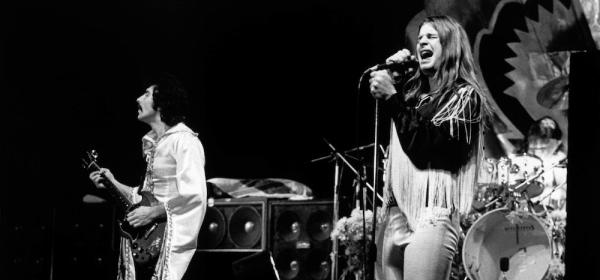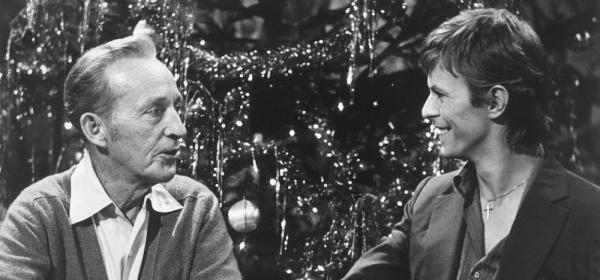Guitar giant Carlos Santana turns 70 today. His blend of Latin music, rock and jazz has been at the forefront of six-string invention since his first band played on the streets in the late 1960s through to festivals in San Francisco that led to the group Santana graduated to the stage at Woodstock.
In celebration of Carlos Santana’s birthday – and his monumental tone – here is a rundown of 10 of his best guitar solos according to Gibson.
10. “Europa”
This instrumental performance from 1977’s Moonflower, a half-studio/half-live two-LP set, remains a towering achievement of melody. It’s both a display of Santana’s ability to mint a catchy tune sans lyrics and his astounding control over feedback, which makes his every note simmer. And then there’s that trademark tone, a sweet singing midrange-heavy sound that seems plucked straight from guitar Olympus, but actually helped define that rarified place.
9. “Soul Sacrifice”
Right out of the box – on the debut LP Santana – “Soul Sacrifice” became a foundational composition in Carlos’ and the band’s repertoire. With a heavy six-string riff offsetting timbales and congas, it’s a study in percussion with solos that erupt from the mix. The song often stretches to 20 minutes live, but the version on the band’s debut taps succinctly into to the heart of Santana’s magical sound.
8. “Jingo”
Getting to the African core of much Latin and Caribbean music, the roots of “Jingo” can be traced to spirituals and work songs. The tune’s a call-and-response playground for the Santana band’s percussionists and their leader’s guitar, which takes a series of keening leads that are perfect examples of the cutting edge his SG with P-90s was capable of delivering.
7. “Samba Pa Ti”
Carlos was experimenting with guitar sounds during the making of 1970’s Abraxas, mixing up his amps and fine-tuning his control of feedback for his group’s sophomore album. He was also working with volume swells and other aspects of manual extended technique. But what makes his lines in this groove fest so memorable is the sizzle he achieves by leaving his wah-wah pedal cocked open through the entire performance, creating sweet, warm and creamy distortion.
6. “She’s Not There”
The solo on this tune from 1977’s Moonflower is a sucker punch. The song progresses pretty much as Rod Argent wrote it, with Carlos adding little guitar punctuations at the close of each lyric phrase until its mid-section, when he punches down the wah-wah, turns up the volume, snaps on some delay and goes hell-bent-for-leather with one of the most maniacal six-string utterances of his career.
5. “Black Magic Woman”
As much as Santana, the album Abraxas cast the die of Santana’s future with its brilliance. The group was looking for a hit when Fleetwood Mac frontman Peter Green suggested they use his yet-unrecorded “Black Magic Woman.” The result is the song that put Santana on the mainstream’s map and defined his power-soaked sound in its weeping melody lines.
4. “Evil Ways”
Yet another gem from Santana, this song also lulls with its smooth vocal performance and laid back groove until Carlos pushes his volume toward the sky and rips out a break full of a youthful aggression that provides stark contrast to the rest of the tune and would seem alien to the type of mature compositions he typically explores today.
3. “Hope You’re Feeling Better”
This Abraxas tune shows Carlos’ early pop chops, with his dynamic solo truly serving the vocal-driven tune, which hopped onto the charts. His guitar break is also one of his more purely rock based riff romps, ducking the chromaticism of much of his Latin and jazz influenced playing to hit like a tornado.
2. “Oye Como Va”
Like “Black Magic Woman,” “Incident at Neshabur” and “Hope You’re Feeling Better,” Latin big-band leader Tito Puente’s “Oye Como Va” is yet another tune from Abraxas that remains in the Santana band’s repertoire today. The number gives Carlos a chance to get back to his Jalisco roots, where music like this echoed from AM radio when he was growing up. His guitar solos weave melodies that come right from the dusty streets, with all the melodic and percussive flair of the great Puente’s own playing.
1.“Incident at Neshabur”
This is a fully realized jazz masterpiece that owes as much to Santana’s Latin roots as it does to the modal jazz of Miles Davis and John Coltrane. Even today, this tune is often the band’s longest number and goes down every tributary they choose to pursue. For Carlos, it’s a melodic and harmonic stretch-out that puts his skills as an improviser to the fore. And on, yes, Abraxas (once again), it’s a deliberate contrast to the more pop-oriented architecture of “Black Magic Woman” and “Hope You’re Feeling Better” that shows the freshness and limitless originality of the first Santana group lineup and the leader’s fertile imagination.


